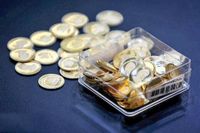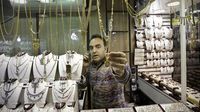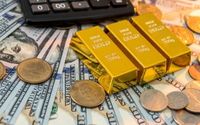On March 17, 2025, Iranian markets witnessed significant surges in the prices of gold, currencies, and coins, leaving investors and market participants to navigate their economic ramifications. Market indicators pointed to rising gold prices, with the price of one ounce climbing to $3,001, marking an increase of 0.56% from the previous day. This follows the upward trend noted over recent days, influenced by global economic factors and local market conditions.
Notably, the 18-carat gold price rose to 7,659,000 Tomans, demonstrating a sizable increase of 4.87% from earlier pricing. Experts assert this rise reflects growing investor demand, often driven by geopolitical tensions and inflation expectations permeated within the Iranian market. "Today, we are seeing the impacts of rising global tensions and inflation expectations, pushing prices upwards," stated market analyst Farid Karami, emphasizing the influence of external factors on local gold prices.
The fluctuations of currencies against the Tomans also caught attention, as the exchange rate for the dollar rose to 94,500 Tomans, alongside increases for other currencies, with the euro priced at 102,890 Tomans and the pound at 122,390 Tomans. The market's sentiment suggests heightened volatility as traders react to inflationary pressures and political instability.
Factors contributing to the rising costs include the continued growth of inflation expectations, driven by local demand changes and fears of political unrest. Experts anticipate this trend may persist, as the incoming end of the fiscal year often stirs demand, though it remains to be seen how foreign relations and economic measures will influence prices.
Investors are keeping a close watch on the market dynamics as analysts predict the gold market may even reach new heights, pending external economic pressures and local purchasing behavior. With the current price above $3,000, analysts indicate the need for sustained demand to maintain these levels, particularly should geopolitical tensions fail to quell.
Consumer behavior appears increasingly tied to economic uncertainty, leading many to opt for traditional safe-haven assets such as gold. According to several forecasts, if political stability can be restored, adjustments might stabilize fluctuated pricing, yet economists warn of the unpredictability within the market.
Compounding the situation is the upward pressure on the price of oil, which soared alongside currency prices, influenced by various global economic indicators and local production concerns. Higher oil prices are expected to reverberate throughout the economy, impacting inflation and driving costs even higher across various sectors.
Market experts express cautious optimism but recognize the inherent risks posed by fluctuated commodity prices intertwined with regional political events, which could quickly alter expectations. The continuing strain from geopolitical tensions across the Middle East signals potential challenges moving forward, likely maintaining high demand for gold as investors seek refuge from market volatility.
It remains uncertain how these economic developments will continue to play out, as traders and market analysts strive to interpret signals received from global authorities and local developments. The next few weeks will be pivotal, shaping market trends as the Iranian economy approaches the end of the fiscal year.
Overall, as prices rise dramatically across various commodities, including gold and currencies, Iranian markets are grappling with complex dynamics reflecting both local demand and global circumstances. This multifaceted response to economic pressures will continuously shape investor strategies as they adapt to the shifting financial reality around them.





